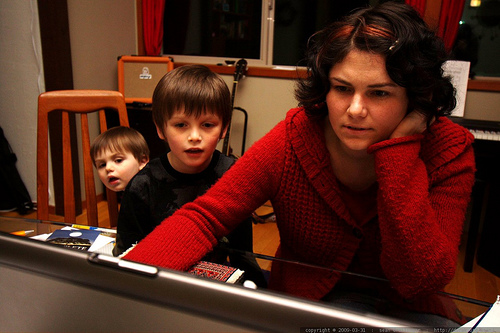When I was a youth worker some of the most common issues I encountered when working with female teenagers were eating disorders. Eating disorders were also some of the least understood issues by parents and other concerned adults.
If you are from the majority of the population who have little or no understanding of eating disorders these couple of posts are designed to provide a brief introduction.
This first post will clarify what an eating disorder is and help you gain an idea of how common they are. This is particularly important in relation to teenagers, as a majority of eating disorders begin during adolescence.
What are Eating Disorders?
Eating disorders are syndromes characterized by severe disturbances in eating behavior or excessive concern about body shape or weight. They come in various forms. The Diagnostic and Statistical Manual of Mental Disorders (DSM) defines three types of major eating disorders; Anorexia Nervosa, Bulimia Nervosa, and Eating Disorders Not Otherwise Specified (EDNOS) which includes Binge Eating Disorder. These disorders are not necessarily discreet, with many sufferers having symptoms of more than one disorder.
Detailed below is the diagnostic criteria for each of the three recognised disorders. Remember there is significant overlap of symptoms and many sufferers may develop symptoms from more than one disorder.
Anorexia Nervosa
The DSM criteria for anorexia nervosa includes:
- Refusal to maintain body weight at or above a minimally normal weight for age and height: Weight loss leading to maintenance of body weight <85% of that expected or failure to make expected weight gain during period of growth, leading to body weight less than 85% of that expected.
- Intense fear of gaining weight or becoming fat, even though under weight.
- Disturbance in the way one’s body weight or shape are experienced, undue influence of body weight or shape on self evaluation, or denial of the seriousness of the current low body weight.
- Amenorrhea (menstrual periods occurring only following hormone administration e.g., estrogen) for at least three consecutive cycles in post-menarchal girls and women.
Bulimia Nervosa
The DSM criteria for bulimia nervosa includes:
- Recurrent episodes of binge eating characterized by both:
- Eating, in a discrete period of time (e.g., within any 2-hour period), an amount of food that is definitely larger than most people would eat during a similar period of time and under similar circumstances
- A sense of lack of control over eating during the episode, defined by a feeling that one cannot stop eating or control what or how much one is eating
- Recurrent inappropriate compensatory behavior to prevent weight gain.
- Self-induced vomiting
- Misuse of laxatives, diuretics, enemas, or other medication
- Fasting
- Excessive exercise
- The binge eating and inappropriate compensatory behavior both occur, on average, at least twice a week for 3 months.
- Self evaluation is unduly influenced by body shape and weight.
- The disturbance does not occur exclusively during episodes of anorexia nervosa.
Eating Disorders Not Otherwise Specified (EDNOS)
Eating disorder not otherwise specified includes disorders of eating that do not meet the criteria for any specific eating disorder.
- For female patients, all of the criteria for anorexia nervosa are met except that the patient has regular menses.
- All of the criteria for anorexia nervosa are met except that, despite significant weight loss, the patient’s current weight is in the normal range.
- All of the criteria for bulimia nervosa are met except that the binge eating and inappropriate compensatory mechanisms occur less than twice a week or for less than 3 months.
- The patient has normal body weight and regularly uses inappropriate compensatory behavior after eating small amounts of food (e.g., self-induced vomiting after consuming two cookies).
- Repeatedly chewing and spitting out, but not swallowing, large amounts of food.
Note that Binge Eating disorder is defined as uncontrolled binge eating without any form of compensatory behaviour such as laxative use.
Eating disorders can be further classified as purging or non-purging types. Purging refers to acts that force the body to pass food more quickly than normal. Purging activity commonly includes self-induced vomiting or the misuse of laxatives, diuretics, or enemas.
Who Suffers From Eating Disorders?
There are significant numbers of people from developed western societies who suffer from some form of eating disorder.
- It is estimated 5% of adolescents and young adults suffer from an eating disorder.
- Up to 7% of the Australian population is thought to suffer from some form of eating disorder.
- The onset for anorexia nervosa is most commonly during early to mid adolescence. Bulimia nervosa onset occurs during adolescence and early adulthood.
- 77% of Australians with bulimia or binge eating disorder are over 25.
- A study of 15,000 18-22 year old Australian women found that 20% had symptoms of Binge Eating Disorder.
- It is estimated only 10% of bulimia cases in Australia are ever identified.
- Anorexia Nervosa is the third most common chronic illness for adolescent girls in Australia (after obesity and asthma).
- Anorexia nervosa and bulimia nervosa are more commonly seen in girls and women. Estimates of female-to-male ratio range is 10:1.
Those who are involved in athletics (running), gymnastics, modeling, ballet, male body builders/wrestlers have higher rates of eating disorders than the general population.
In the next post we will look at possible causes and symptoms of eating disorders.
Sources for this post include:
Eating Disorders Foundation of Victoria
Centre of Excellence in Eating Disorders
The Butterfly Foundation
This post is general in nature and is not intended to provide personal medical advice. If you have concerns please consult your local doctor or health professional. Image by st4rbucks





